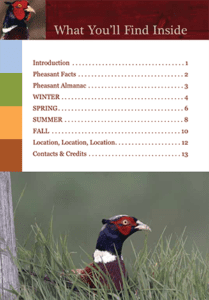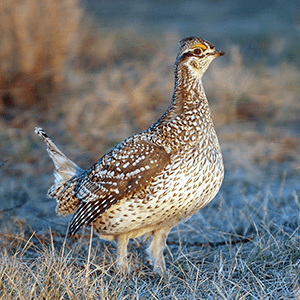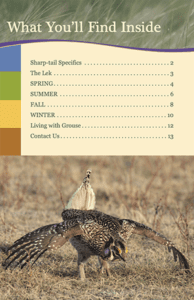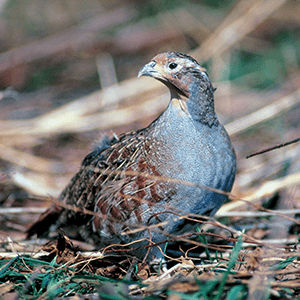There are a number of factors that contribute to the loss of pheasant habitat including:
-
- Trespass farming of roadside ditches and right-of-ways (find more at savetheedges.ca)
- Decline of family farmsteads
- Subdivision of prime farmland
- Clearing of brush and trees
- Removal of field shelterbelts
- Drainage of wetlands
- Over grazing of shelterbelts and creek and coulee bottomlands
- Back-sloping of roads
- Burning of railroad grades
- Increased use of herbicides and pesticides
- Predation
View our ring-necked pheasant factsheet.
Visit our page on the life-cycle of the ring-necked pheasant.
For even more interesting facts and all about this colourful bird visit the All About Birds guide.
Ring-necked Pheasants Through the Seasons was developed in partnership with the Alberta Conservation Association and Pheasants Forever. It offers a glimpse into the life of Alberta’s pheasants and highlights how their activities and habitat needs change through the seasons.
OTHER BIRDS OF INTEREST – SHARP-TAILED GROUSE
The sharp-tailed grouse is a native game bird that makes its home in the prairies, parklands and forest openings of Alberta. For much of the year the sharp-tailed grouse is a quiet, well-camouflaged bird, however, it’s spring shenanigans are undoubtedly one of the most impressive spectacles in Alberta’s natural history calendar. Unfortunately, sharp-tailed grouse numbers are dwindling in Alberta. With your help, Alberta Conservation Association hopes to reverse this trend so you and future generations can continue to appreciate and enjoy this fascinating species.
Sharp-tailed Grouse Through the Season provides biological information on the sharp-tailed grouse and offers simple suggestions about how you can improve habitat for the sharp-tailed grouse on your property.
OTHER BIRDS OF INTEREST – GREY PARTRIDGE
Grey partridges forage on the ground in small groups made up of adults and their offspring. You will see it push its head forward and flick its tail while walking. They also often run in a crouched position. When disturbed, they will burst into the air, flying low over the ground with rapid wingbeats.





